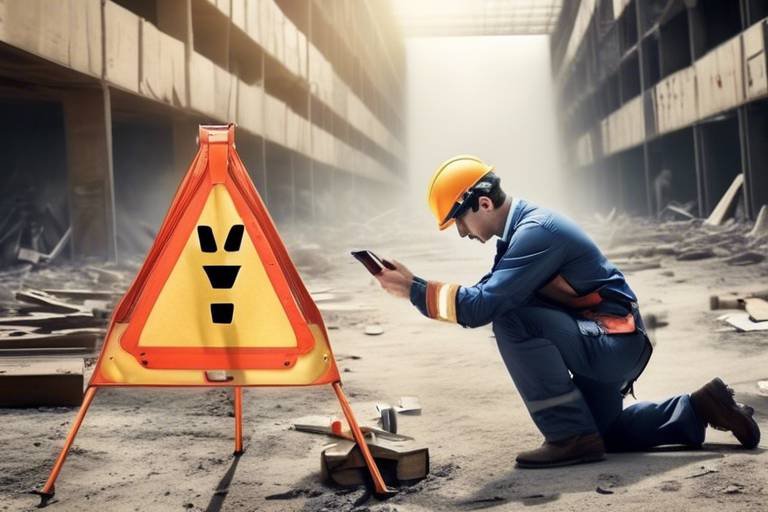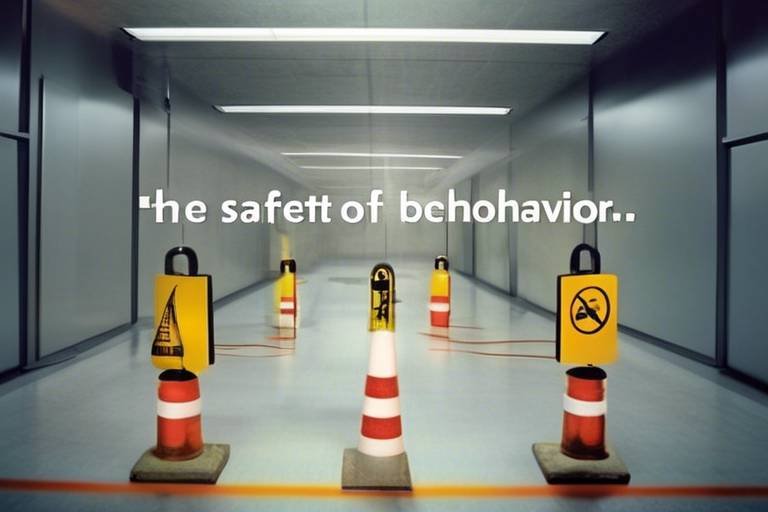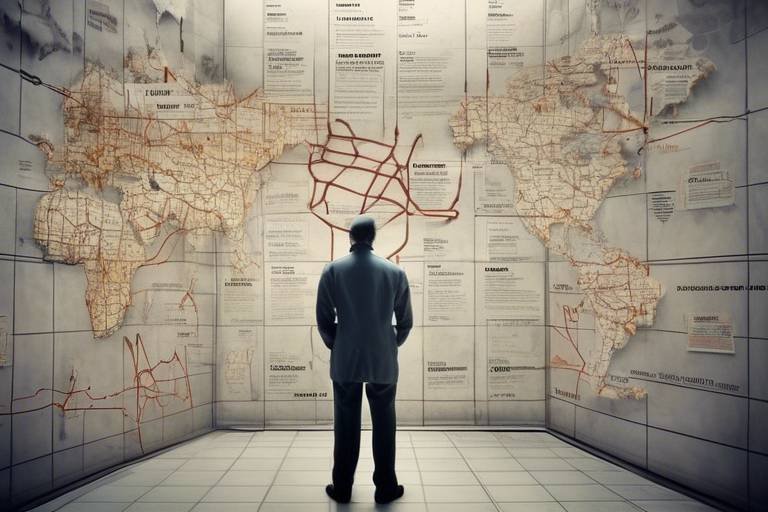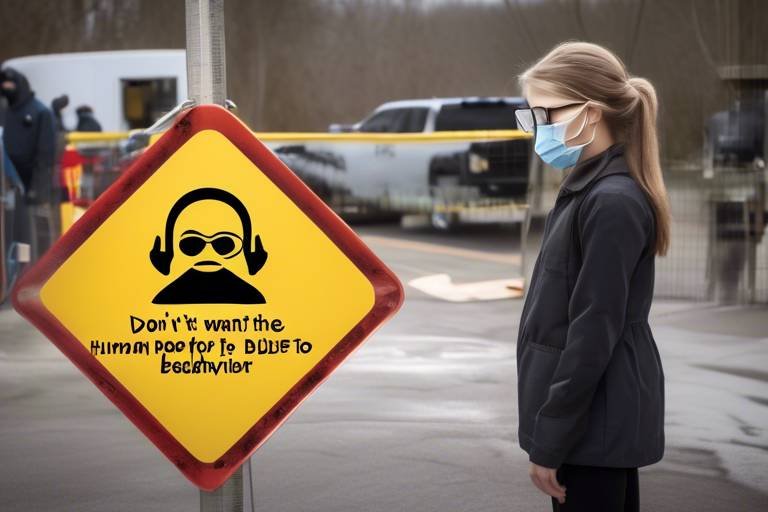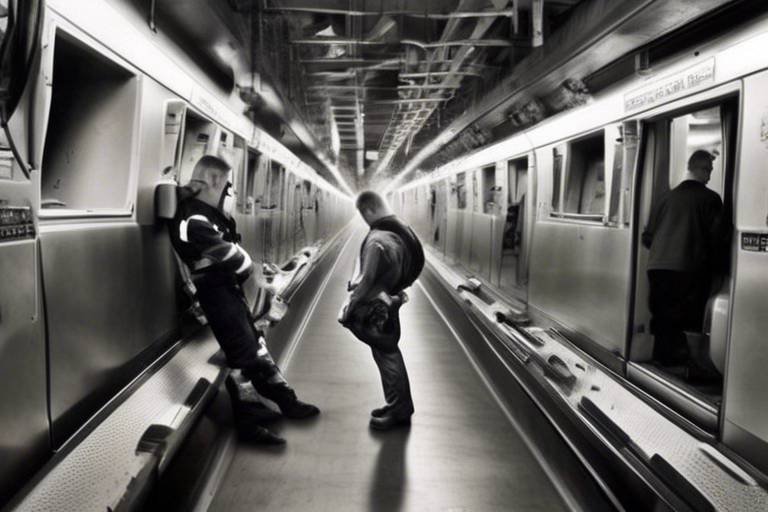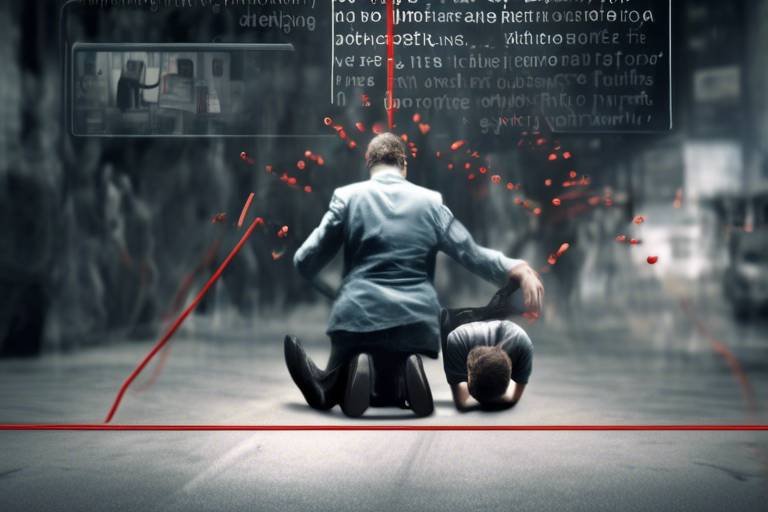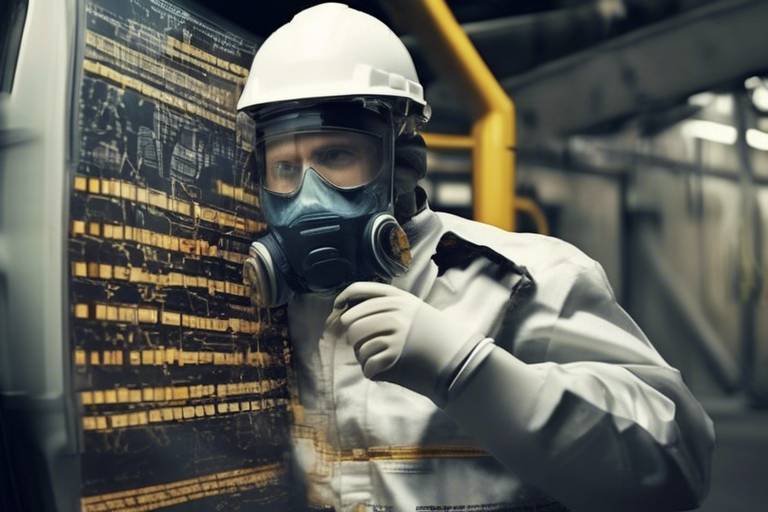Human Behavior: A Safety Measure in Disguise
Have you ever stopped to think about how your instincts might be silently working to keep you safe? It’s fascinating to realize that our human behavior often acts as an unrecognized safety mechanism, subtly influencing our decision-making and risk assessment both in our daily lives and during emergency situations. Picture this: you’re walking alone at night and suddenly hear footsteps behind you. Instinctively, your body might tense up, your heart races, and you might even quicken your pace. This is not just a reaction; it’s your innate survival system kicking in, urging you to assess the potential danger. In this article, we’ll dive deep into the complexities of human behavior and how it serves as a safety measure, often without us even realizing it.
Human instincts are like the silent guardians of our well-being, guiding us in times of peril. These instinctual behaviors have evolved over centuries, finely tuned to protect us from various threats. For instance, think about how you instinctively flinch when something suddenly flies toward your face. This isn't just a reflex; it's a protective mechanism designed to shield you from harm. Our ancestors relied on these instincts to survive in a world filled with predators and dangers. Today, while the threats may have changed, the underlying instincts remain. They manifest in our behaviors, often steering us away from risky situations and keeping us safe.
Fear is a powerful emotion, and it plays a critical role in our behavioral responses. When faced with uncertainty, fear can act as a natural safety measure, prompting us to avoid risky situations. For example, if you’ve ever hesitated before trying something new—like bungee jumping or speaking in public—that’s fear at work. It’s your brain’s way of saying, “Hold on! Let’s think this through!” This protective instinct can lead to safer choices, which is essential for our survival. However, it’s important to strike a balance, as excessive fear can also lead to missed opportunities and unnecessary limitations.
One of the most fascinating aspects of human behavior is the fight or flight response. This biological mechanism prepares us to either confront or escape danger. Imagine you’re hiking in the woods and suddenly encounter a bear. Your body instantly goes into survival mode, either gearing up to fight or making a quick dash in the opposite direction. This response is crucial for survival in threatening scenarios, and it’s fascinating how our bodies are designed to react so swiftly and effectively.
When faced with danger, our bodies undergo significant physiological changes that enhance our chances of survival. These changes include:
- Increased heart rate: Pumps more blood to vital organs and muscles.
- Heightened senses: Improves awareness of surroundings.
- Adrenaline release: Provides a burst of energy for quick reactions.
These adaptations are not just fascinating; they are essential for our survival during crises. They enable us to respond quickly and effectively to threats, showcasing the incredible resilience of the human body.
The psychological effects of the fight or flight response can significantly influence our decision-making processes. When we feel threatened, our perception of risk changes dramatically. For example, someone who has experienced a car accident may develop a heightened fear of driving, leading them to avoid it altogether. This shift in perception can affect how we navigate our daily lives, often making us more cautious in situations that we perceive as risky. Understanding this psychological impact can help us manage our fears better and make more informed decisions.
Social interactions also play a crucial role in shaping our safety behaviors. The dynamics within a group can either enhance or hinder individual safety measures. For instance, if you’re part of a group that regularly engages in risky behaviors—like extreme sports or reckless driving—you might feel pressured to conform, even if it goes against your instinctual drive for safety. Conversely, being in a supportive group that prioritizes safety can reinforce positive behaviors and encourage individuals to make safer choices. It’s a delicate balance, but understanding the influence of social behavior can help us navigate these situations more effectively.
Everyday decision-making often involves a subconscious evaluation of risks. From choosing what to eat to deciding whether to take a shortcut home, we constantly assess potential dangers. This process serves as a protective measure, helping us to avoid situations that could lead to harm. However, it’s not always straightforward. Sometimes, our perceptions of risk can be skewed by various factors, leading us to make decisions that might not be in our best interest.
Cognitive biases can significantly affect how we perceive risks and safety. For instance, the availability heuristic leads us to overestimate the likelihood of events based on recent experiences or information. If you’ve recently heard about a plane crash, you might suddenly feel anxious about flying, even though statistically, it’s one of the safest modes of transportation. Recognizing these biases can help us make more rational decisions and better understand our instinctual drives for safety.
Our past experiences shape our understanding of risk and influence our future behaviors. Each time we encounter a potentially dangerous situation, we learn and adapt, enhancing our ability to navigate similar circumstances effectively. For example, if someone has had a bad experience with a particular food, they may be more cautious in trying new dishes in the future. This learning process is crucial for our development and safety, allowing us to refine our instincts and make better choices over time.
Q: How can I improve my instinctual responses to danger?
A: Practicing mindfulness and being aware of your surroundings can help enhance your instinctual responses. Regularly engaging in activities that challenge your comfort zone can also sharpen your instincts.
Q: Are there ways to manage fear effectively?
A: Yes! Techniques such as deep breathing, visualization, and gradual exposure to feared situations can help manage fear and reduce its impact on decision-making.
Q: How do social dynamics impact personal safety?
A: Social dynamics can either encourage safe behaviors or lead to risk-taking. Surrounding yourself with supportive individuals who prioritize safety can positively influence your own behaviors.

Understanding Human Instincts
This article explores how human behavior often acts as an unrecognized safety mechanism, influencing decision-making and risk assessment in daily life and emergency situations.
Human instincts are like the built-in safety nets of our existence, guiding us through a world filled with potential dangers. These instincts have been honed over thousands of years, evolving to ensure our survival. Think of them as the ancient wisdom passed down through generations, embedded in our DNA. When faced with a threat, our instincts kick in, often before we even have the chance to think about it. This automatic reaction is crucial, as it allows us to respond swiftly to danger, whether it’s a growling bear in the woods or an unexpected car speeding towards us on the street.
One of the most fascinating aspects of human instincts is their universal nature. Regardless of culture or background, most people exhibit similar instinctual behaviors when confronted with peril. For instance, the instinct to flee from danger is common across all societies. This instinctual flight can be likened to a fire alarm going off in a crowded building—it's an immediate call to action. But instincts aren’t just about running away; they also involve defensive actions. When cornered, many individuals will instinctively prepare to fight, showcasing the dual nature of our survival instincts.
Moreover, our instincts are not just reactive; they also play a role in our decision-making processes. For example, when we sense danger, our body releases adrenaline, which heightens our awareness and sharpens our reflexes. This physiological response can lead to a clearer assessment of the situation, allowing us to make quicker and often safer choices. It's as if our body is running a quick risk assessment, weighing the pros and cons in a matter of seconds.
Additionally, human instincts are influenced by our social environments. We are not solitary creatures; our behaviors are often shaped by the people around us. For instance, in a group setting, the instinct to conform can sometimes override our personal instincts. This can be both beneficial and detrimental. While it promotes collective safety in some situations, it may also lead individuals to engage in risky behaviors that they would otherwise avoid alone. Understanding this interplay between individual instincts and social dynamics is crucial for enhancing safety measures.
In summary, human instincts are a complex interplay of biological, psychological, and social factors. They act as our first line of defense against danger, guiding our actions and decisions in both everyday life and extreme situations. Recognizing and understanding these instincts can empower us to harness them more effectively, ensuring that we not only survive but thrive in a world filled with uncertainties.
Fear is a powerful emotion that can drive behavior. Here, we examine how fear acts as a safety measure, prompting individuals to avoid risky situations and make safer choices.
The fight or flight response is a biological mechanism that prepares individuals to confront or escape danger. This subheading discusses its significance in ensuring survival during threatening scenarios.
When faced with danger, the body undergoes physiological changes that enhance survival. This section details these changes and their importance in human behavior during crises.
The psychological effects of the fight or flight response can influence decision-making. Here, we explore how this response shapes our perceptions of risk and safety.
Social interactions significantly impact safety behaviors. This subheading investigates how group dynamics and social norms can enhance or hinder individual safety measures.
Everyday decision-making involves assessing risks. This section analyzes how individuals subconsciously evaluate risks and how this process serves as a protective measure in various contexts.
Cognitive biases affect how we perceive risks and safety. This subheading discusses common biases that can lead to unsafe behaviors, despite our instinctual drive for safety.
Experience shapes our understanding of risk. Here, we explore how past experiences inform future behaviors, enhancing our ability to navigate potentially dangerous situations effectively.
- What are human instincts? Human instincts are innate behaviors that have evolved over time to help us survive and respond to threats.
- How does fear influence decision-making? Fear can prompt individuals to avoid risky situations and make safer choices, acting as a protective measure.
- What is the fight or flight response? It is a biological reaction that prepares the body to either confront or flee from danger.
- How do social interactions affect safety behaviors? Social norms and group dynamics can either enhance or hinder individual safety measures.

The Role of Fear
Fear is a powerful emotion that acts as a double-edged sword; it can be both paralyzing and protective. When faced with a potential threat, fear kicks in, often nudging us away from danger and steering our decision-making processes. Think about it—have you ever felt that rush of adrenaline when you’re about to cross a busy street? That’s fear at work, urging you to be cautious and alert. It’s like an internal alarm system, always on standby, ready to protect you from harm.
But fear isn’t just a simple emotion; it’s a complex mechanism that influences our behavior in profound ways. It can dictate our choices, often leading us to avoid risky situations altogether. For instance, when you hear a loud bang in a dark alley, your instinct may be to turn around and walk the other way. This reaction is not just about being scared; it’s a survival tactic honed over centuries of evolution. Our ancestors faced real threats from predators and hostile environments, and those who learned to fear danger were more likely to survive and pass on their genes.
Interestingly, fear can also create a sense of urgency. It can prompt us to act quickly in emergencies, allowing us to escape from perilous situations. This is particularly evident in the fight or flight response, which is triggered when we perceive a threat. This response can be broken down into two primary actions:
- Fight: Confronting the danger head-on.
- Flight: Escaping the situation as quickly as possible.
In today’s world, the threats we face may not always be physical. They can be emotional, social, or even financial. For example, the fear of failure can prevent someone from pursuing a new job opportunity, while the fear of rejection can stop us from opening up to others. These fears, while less tangible, can still have a significant impact on our safety and well-being. They can keep us in our comfort zones, protecting us from potential hurt but also limiting our growth.
Moreover, fear can be contagious. Just as a yawn can spread from one person to another, so can fear. When we see others reacting with fear, it can amplify our own feelings and lead to a collective response. This phenomenon is particularly evident in social situations, where group dynamics can either enhance or hinder our safety measures. For instance, if a crowd panics during an emergency, it can lead to chaos, making it harder for individuals to make rational decisions. Conversely, a calm and collected group can instill a sense of safety, helping everyone navigate the situation more effectively.
In summary, fear is not merely an emotion; it’s a vital part of our survival toolkit. It shapes our perceptions, drives our behaviors, and influences our interactions with others. By understanding the role of fear in our lives, we can better harness it to ensure our safety and well-being. So, the next time you feel that flutter of anxiety, remember: it’s your body’s way of keeping you safe, urging you to make choices that protect your life.

Fight or Flight Response
The is one of the most fascinating and essential mechanisms embedded in our biology. This instinctual reaction is our body’s way of protecting us from perceived threats. Imagine you're walking through a dark alley and suddenly hear footsteps behind you. In that split second, your body springs into action, ready to either confront the danger or flee from it. This response is not just a reaction; it’s a complex interplay of hormones and physiological changes designed to enhance our chances of survival.
When faced with a threat, the body releases a surge of adrenaline and other stress hormones, which trigger a series of changes. Your heart rate increases, pumping blood faster to your muscles, and your breathing quickens to supply more oxygen. This is nature’s way of preparing you for action. You might feel a rush of energy, heightened senses, and an intense focus on the threat at hand. It’s as if your body is saying, “Get ready! You need to make a choice—fight or run!”
But what’s truly remarkable is how this response is not just physical. It also has profound psychological implications. The can alter our perceptions of risk and safety. For instance, when you’re in a state of heightened arousal, your brain tends to focus on the immediate danger, often overlooking other important factors. This can lead to hasty decisions, which, while aimed at ensuring safety, might not always be the best course of action. Think about it: have you ever reacted impulsively in a stressful situation, only to regret it later? That’s the fight or flight response in action, pushing you to act quickly.
Additionally, the fight or flight response can vary significantly from person to person. Some individuals might feel an overwhelming urge to confront the danger head-on, while others may choose to escape. This variation can be influenced by numerous factors, including past experiences, personality traits, and even cultural background. For example, someone who has faced a similar threat before might react differently than someone encountering it for the first time. Understanding these differences can be crucial, especially in emergency situations where quick thinking is essential.
Let’s take a closer look at the physiological changes that occur during this response:
| Physiological Change | Effect |
|---|---|
| Increased Heart Rate | Delivers more oxygen to muscles |
| Rapid Breathing | Increases oxygen intake |
| Dilation of Pupils | Enhances vision |
| Release of Glucose | Provides energy for muscles |
In summary, the is a vital survival mechanism that prepares us to face danger or escape from it. While it can save our lives, it’s essential to recognize its limitations and understand how it influences our decision-making processes. By being aware of our instincts and the physiological changes that accompany them, we can better navigate both everyday challenges and emergencies.
- What triggers the fight or flight response?
The response is triggered by perceived threats, whether physical or emotional. - Can the fight or flight response be controlled?
While it is an instinctual reaction, individuals can learn techniques to manage their responses through practices like mindfulness and stress management. - How does the fight or flight response affect decision-making?
This response can lead to quick, instinctual decisions that may not always be rational, as it focuses on immediate danger.

Physiological Changes
When faced with danger, our bodies undergo a series of remarkable that are designed to enhance our chances of survival. This response is not just a random occurrence; it is a finely tuned mechanism that has evolved over millions of years. Imagine your body as a sophisticated alarm system, triggering various functions to prepare you for action. The moment you sense danger, your body kicks into high gear, and several changes take place almost instantaneously.
One of the first changes you might notice is the acceleration of your heart rate. This increase in heart rate is crucial because it pumps more blood—and therefore more oxygen—into your muscles, preparing them for swift action. Alongside this, your breathing rate increases, allowing your lungs to take in more oxygen. Think of it as your body’s way of saying, “Get ready to run or fight!” This rush of oxygen is essential for fueling the muscles that will either propel you away from danger or equip you to confront it head-on.
Additionally, your body releases stress hormones like adrenaline and cortisol. These hormones act like a turbocharger for your body, heightening your senses and sharpening your focus. You become more alert, your pupils dilate to take in more light, and your skin may even feel colder as blood is redirected to your vital organs. This is an instinctive act of prioritizing survival over comfort. In essence, your body is making a split-second decision to prepare for action, ensuring that you are ready for whatever comes your way.
Here's a quick overview of the key physiological changes that occur during this response:
| Physiological Change | Description |
|---|---|
| Increased Heart Rate | Pumps more blood to muscles, preparing for action. |
| Rapid Breathing | Increases oxygen intake for enhanced physical performance. |
| Hormonal Surge | Release of adrenaline and cortisol to heighten alertness. |
| Pupil Dilation | Allows more light into the eyes for better vision. |
| Cold Skin | Redirects blood flow to vital organs, prioritizing survival. |
These physiological changes are not just fascinating; they play a critical role in ensuring our safety. However, it’s important to remember that while these instinctual responses can save lives, they can also lead to heightened anxiety and stress if activated too frequently or during non-threatening situations. This is where understanding our body's reactions becomes essential. By recognizing these changes, we can better manage our responses to fear and danger, allowing us to make more informed decisions in high-pressure situations.
- What triggers the fight or flight response?
The fight or flight response is triggered by perceived threats, whether they are physical dangers or emotional stressors. - Can the fight or flight response be controlled?
While it is an instinctual reaction, techniques such as deep breathing and mindfulness can help manage its effects. - Are there long-term effects of frequent activation of this response?
Yes, chronic activation can lead to health issues such as anxiety, heart disease, and other stress-related conditions.

Psychological Impact
The of the fight or flight response is profound, shaping our perceptions and influencing our decision-making processes in critical situations. When faced with danger, our brains undergo a remarkable transformation, prioritizing survival above all else. This instinctual reaction not only prepares us physically but also alters our mental state, leading us to experience heightened levels of anxiety, focus, and urgency. Have you ever noticed how time seems to slow down during a frightening moment? That's your brain working overtime, assessing the situation and determining the best course of action.
During these moments, our cognitive functions are sharply tuned to detect threats. This is where the amygdala, the part of the brain responsible for processing emotions, plays a crucial role. It sends signals to the body to prepare for action, which can lead to a variety of psychological effects, including:
- Increased Anxiety: The anticipation of danger can create a constant state of worry, making it difficult to focus on anything else.
- Heightened Awareness: Individuals become hyper-aware of their surroundings, often noticing details they might typically overlook.
- Decision Paralysis: In some cases, the overwhelming nature of fear can lead to indecision, where individuals struggle to make choices in a crisis.
This psychological response can also lead to long-term changes in behavior. For instance, someone who has experienced a traumatic event may develop a heightened sensitivity to similar situations in the future, leading to avoidance behaviors. This is known as post-traumatic stress disorder (PTSD), which can significantly impact one's quality of life. The brain becomes wired to associate certain triggers with danger, resulting in an ongoing cycle of fear and avoidance.
Interestingly, the psychological impact of fear isn't always negative. It can also foster a sense of solidarity and community among individuals facing similar threats. Think about how people come together during times of crisis—whether it’s a natural disaster or a public safety incident. This collective response can enhance feelings of safety and support, reminding us that we are not alone in our struggles.
Understanding the psychological impact of our instinctual responses not only helps us navigate dangerous situations better but also encourages us to develop coping mechanisms. By recognizing how fear influences our thoughts and behaviors, we can learn to manage our reactions more effectively, ultimately enhancing our safety and well-being.
- What is the fight or flight response?
The fight or flight response is a physiological reaction that occurs in response to a perceived harmful event, attack, or threat to survival. It prepares the body to either confront or flee from danger.
- How does fear affect decision-making?
Fear can lead to heightened awareness and caution, prompting individuals to avoid risky situations. However, it can also cause indecision and anxiety, impacting the ability to make clear choices.
- Can fear be beneficial?
Yes, fear can be beneficial as it helps to protect us from danger by promoting cautious behavior. It can also foster a sense of community and support during crises.

Social Behavior and Safety
When we think about safety, we often picture an individual making decisions in isolation. However, the truth is that social behavior plays a pivotal role in shaping how we assess risks and respond to potentially dangerous situations. Just like a flock of birds that moves in unison to evade a predator, humans are influenced by the actions and reactions of those around them. This interconnectedness can either enhance our safety measures or, conversely, lead us into more perilous situations.
One of the most fascinating aspects of social behavior is the concept of group dynamics. When we find ourselves in a group, our decision-making processes can shift dramatically. For instance, if a crowd is panicking, an individual may feel compelled to join in, even if they initially perceived the situation as safe. This phenomenon can lead to a cascade of unsafe behaviors, driven by the collective fear rather than rational thought. On the flip side, a calm and collected group can provide a sense of security, encouraging individuals to make safer choices. Think of it as a safety net where the actions of one can bolster the actions of many.
Moreover, social norms significantly influence our behavior. These unwritten rules dictate what is considered acceptable or safe in various situations. For example, if everyone at a party is drinking excessively, an individual may feel pressured to partake, despite knowing the risks involved. Conversely, in environments where safety is prioritized—like a workplace that emphasizes safety protocols—individuals are more likely to adhere to safe practices. In this way, our social circles can act as both shields and swords in the realm of safety.
Interestingly, social learning also plays a crucial role in how we perceive safety. We often look to others for cues on how to behave in unfamiliar situations. If we see a friend taking precautions, such as wearing a helmet while biking, we are more likely to follow suit. This learned behavior can enhance our safety practices, as we absorb the lessons from those around us. However, it can also lead to dangerous situations if we imitate unsafe behaviors. Just as a child learns to navigate the world by observing their parents, adults continuously adapt their safety measures based on social interactions.
In conclusion, understanding the interplay between social behavior and safety is essential for enhancing our risk assessment skills. By recognizing how group dynamics, social norms, and social learning influence our decisions, we can better equip ourselves to make safer choices. So, the next time you find yourself in a group, remember that your actions and the actions of those around you can significantly impact your safety. It’s not just about individual instincts; it’s about the collective behavior that shapes our experiences.
- How does fear influence our social behavior? Fear can lead to both protective and risky behaviors in social settings, depending on how individuals react to perceived threats.
- Can social norms change our perception of safety? Yes, social norms can either enhance safety by promoting safe behaviors or diminish it by normalizing risky actions.
- What role does peer influence play in safety decisions? Peer influence can significantly impact an individual's decision-making, often swaying them towards or away from safe practices.

Risk Assessment in Daily Life
Every day, we are faced with a multitude of decisions, many of which involve some level of risk. Whether it's choosing to cross a busy street, deciding to try a new restaurant, or even opting to take a different route home, our brains are constantly engaged in a complex dance of risk assessment. This process is often subconscious, yet it plays a pivotal role in keeping us safe. But how do we evaluate risk? What factors come into play when we make these decisions? Let’s dive deeper into the fascinating world of human behavior and risk assessment.
At its core, risk assessment is about weighing the potential benefits against the possible dangers. We often rely on a combination of instinctual responses and learned experiences to guide us. For instance, if you’ve ever had a bad experience with a certain food, you might instinctively avoid it in the future. This is a classic example of how our past shapes our present choices. It's like having a mental checklist that triggers caution based on previous outcomes.
Interestingly, our environment also plays a significant role in how we assess risk. Social influences, cultural norms, and even media portrayals can skew our perception. For example, if everyone around you is raving about a new thrill-seeking activity, you might feel more inclined to try it, despite your initial hesitations. This phenomenon is often referred to as social proof, where individuals look to others to gauge the safety or desirability of a situation.
Moreover, cognitive biases can significantly impact our risk assessment. These are systematic patterns of deviation from norm or rationality in judgment, which can lead us to make poor decisions. For instance, the optimism bias might lead us to believe that we are less likely to experience negative events compared to others. This can result in risky behaviors, such as neglecting safety measures while driving or underestimating the dangers of certain activities.
In contrast, the availability heuristic can cause us to overestimate risks based on recent events or vivid memories. If a plane crash is widely reported in the news, we might suddenly feel that flying is more dangerous than it statistically is, leading us to avoid air travel altogether. These biases remind us that our perceptions of risk are not always grounded in reality, but rather in our experiences and the information we have at hand.
Ultimately, the ability to assess risk effectively is a skill that can be honed over time. By reflecting on our past experiences and being mindful of the cognitive biases that influence our decisions, we can improve our judgment and enhance our safety. It’s like sharpening a tool; the more we practice, the more adept we become at navigating the complexities of risk in our daily lives.
- What is risk assessment? Risk assessment is the process of identifying and evaluating potential risks in order to make informed decisions.
- How do cognitive biases affect risk assessment? Cognitive biases can distort our perception of risk, leading to either overestimation or underestimation of dangers.
- Can I improve my risk assessment skills? Yes! By reflecting on past experiences and being aware of biases, you can enhance your ability to assess risks effectively.

Cognitive Biases
When we think about risk assessment in our daily lives, it's essential to recognize that our brains don't always operate in a logical or rational manner. Instead, they are often influenced by what are known as . These biases are systematic patterns of deviation from norm or rationality in judgment, and they can significantly affect how we perceive risks and safety. For instance, have you ever noticed how some people are terrified of flying yet will drive hundreds of miles without a second thought? This is a classic example of cognitive bias at play, where the perceived danger of flying outweighs the statistical reality of its safety compared to driving.
Cognitive biases can lead us to make decisions that may not align with actual risks. Here are a few common cognitive biases that can impact our safety behaviors:
- Confirmation Bias: This is our tendency to search for, interpret, and remember information in a way that confirms our preconceptions. For example, if someone believes that a certain neighborhood is dangerous, they may only pay attention to news stories that reinforce that belief, ignoring evidence to the contrary.
- Availability Heuristic: This bias involves overestimating the likelihood of events based on how easily examples come to mind. If a person frequently hears about car accidents in the news, they might overestimate the risk of driving, even if statistically, it's safer than many other activities.
- Optimism Bias: Many people believe that they are less likely to experience a negative event compared to others. This can lead to risky behaviors, such as not wearing a seatbelt or texting while driving because they feel “it won’t happen to me.”
These cognitive biases often operate at a subconscious level, making them challenging to combat. However, being aware of them is the first step toward better decision-making. For instance, if you recognize that you have an optimism bias, you might take extra precautions when engaging in activities that carry risk, such as wearing protective gear or avoiding distractions while driving.
Moreover, cognitive biases can also be influenced by social factors. For example, if everyone around you is dismissing the risks of a certain behavior, you might feel pressured to do the same, even if your instincts tell you otherwise. This is where group dynamics can play a crucial role in shaping our perceptions of safety. Understanding these influences can help us navigate our decisions more effectively and prioritize our safety in various situations.
In conclusion, cognitive biases are an integral part of human behavior, often acting as a double-edged sword. While they can sometimes lead us to make poor decisions regarding safety, being aware of them allows us to counteract their effects and make more informed choices. By recognizing how our minds work, we can enhance our ability to assess risks accurately, ultimately leading to safer outcomes in our daily lives.

Learning from Experience
Learning from experience is one of the most powerful ways we adapt and ensure our safety in a constantly changing world. Think about it: every time you face a challenging situation, your brain is like a sponge, soaking up valuable lessons that can shape your future decisions. This process is not just about recalling what happened but also about analyzing the outcomes and adjusting your behavior accordingly. For instance, if you touch a hot stove and get burned, the immediate reaction is to pull your hand away. But the real learning happens when you remember that pain the next time you're near a stove. It's this kind of experiential learning that forms the backbone of our instinctual safety measures.
Moreover, our experiences are often colored by the context in which they occur. For example, if you’ve had a negative experience while driving in bad weather, you might become overly cautious in similar conditions in the future. This heightened awareness is a natural safety response. It’s your brain saying, “Hey, I’ve been here before, and it didn’t end well. Let’s take it easy this time.” Such reflections can lead to a more conservative approach in decision-making, which can be beneficial in averting danger.
In addition to personal experiences, observing others can also play a significant role in how we learn about risks. When we see someone else make a mistake, our brains often take note, allowing us to avoid similar pitfalls. This is particularly evident in social situations where peer behavior influences individual choices. For instance, if you witness a friend getting injured while engaging in a reckless activity, you might think twice before joining in next time. This is a classic case of vicarious learning, where we benefit from the experiences of others to enhance our own safety measures.
To further illustrate this, let’s take a look at a simple table that summarizes how learning from experience influences our decision-making:
| Experience | Outcome | Future Behavior |
|---|---|---|
| Burning your hand on a stove | Pain and injury | Avoiding hot surfaces |
| Getting into an accident while texting | Damage to vehicle and potential injury | Not texting while driving in the future |
| Seeing a friend get hurt while skateboarding | Injury | Being cautious while skateboarding |
As we continue to navigate through life, our ability to learn from experience becomes a crucial part of our survival toolkit. By reflecting on past events, whether they are personal or observed, we create a mental library of safety measures that guide our future actions. This process not only helps us avoid danger but also fosters a sense of confidence as we tackle new challenges. So, the next time you find yourself in a tricky situation, remember that your past experiences are there to guide you, acting as a silent yet powerful safety mechanism.
- How does learning from experience improve safety?
Learning from experience helps individuals recognize potential dangers and adjust their behavior to avoid similar risks in the future. - Can observing others' mistakes influence my safety decisions?
Yes, observing the experiences of others can lead to vicarious learning, allowing you to avoid making the same mistakes. - What role does reflection play in learning from experience?
Reflection allows individuals to analyze past situations, understand their outcomes, and apply those lessons to future decisions.
Frequently Asked Questions
- What role do human instincts play in safety?
Human instincts are like our built-in safety alarms. They guide our reactions to threats, helping us make quick decisions in dangerous situations. These instinctual behaviors have evolved over time to protect us from harm, often without us even realizing it!
- How does fear influence our daily decisions?
Fear is a powerful motivator! It can push us to avoid risky situations and make safer choices. When we feel fear, our brains kick into high gear, assessing potential dangers and steering us away from harm’s way.
- What is the fight or flight response?
The fight or flight response is our body's natural reaction to danger. When faced with a threat, our body prepares to either confront it or escape. This response is crucial for survival, activating physiological changes that help us respond effectively to danger.
- What physiological changes occur during a fight or flight response?
During a fight or flight response, our bodies undergo several changes, such as increased heart rate, heightened senses, and a surge of adrenaline. These changes prepare us to either fight the threat or flee from it, enhancing our chances of survival.
- How does social behavior affect safety?
Social interactions play a significant role in our safety behaviors. The dynamics of a group can either enhance or hinder individual safety measures. For example, when we see others taking precautions, we’re more likely to follow suit!
- How do cognitive biases impact our risk assessment?
Cognitive biases can cloud our judgment when assessing risks. They might lead us to underestimate dangers or overestimate our ability to handle them. Recognizing these biases is essential for making safer choices.
- Can past experiences influence our behavior in dangerous situations?
Absolutely! Our past experiences shape how we perceive risks and react to them. Learning from previous encounters with danger helps us navigate future situations more effectively, making us more aware and cautious.





